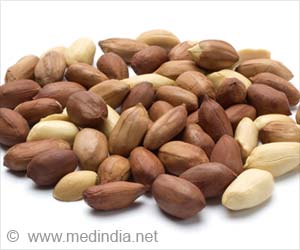Protein pathways that are closely linked to changes in both triglyceride and hemoglobin A1c levels in diabetic patients have been identified. This finding is important to find a way to prevent the onset of heart disease or diabetic complications.

- Protein pathways that cause diabetic complications and increased heart disease have been identified.
- An increase in proteins in the pathways of semaphorin and plexin may result in increased HbA1c which in turn may lead to diabetic retinopathy.
- HbA1c refers to ‘glycosylated hemoglobin’ which is used as a marker for long-term blood sugar level.
"Understanding the biology of how proteins interact with other cells in the body can improve patient care and help physicians prevent catastrophic events like heart attack, stroke, or death," said Stacey Knight, PhD, a researcher with the Intermountain Medical Center Heart Institute and lead author of the study. "The findings of these studies may help explain the often-increased triglyceride levels that lead to cardiovascular events for diabetic patients."
In diabetic patients, high triglyceride levels are associated with heart disease and stroke. High levels of hemoglobin A1C are also associated with increased complications like diabetic retinopathy.
For one of the studies, researchers looked at 264 patients who were enrolled in the FACTOR-64 study, which was a clinical trial designed to reduce the risks of diabetic patients for cardiovascular disease. A SOMA scan assay was used to determine the plasma levels for more than 4,000 proteins.
Pathways of semaphorin and plexin and diabetic retinopathy
Researchers found a significant association between the pathways of semaphorin and plexin, both of which have been found to the linked with with diabetic retinopathy, a diabetic complication in which high blood glucose levels damage the blood vessels of the retina.
"We found that an increase of the proteins in this pathway may result in increased hemoglobin A1C, or an increased A1C increase proteins in the pathway," said Dr. Knight. "We’ll need to further explore this association to identify how those two elements influence each other."
- Insulin-like growth factor-binding protein
- Immunoglobulin
- Fibronectin
"These initial findings made us pause for a moment and start asking additional questions about these relationships," said Dr. Knight. "We hope to further explore these pathways to better identify where interventions may occur to help reduce risk for cardiovascular events in diabetic patients."
- Stacey Knight, Heidi May, Jeffrey Anderson, Kirk Knowlton and J. Muhlestein. Semaphorin and Plexin Pathways Associated with Increases in Hemoglobin A1C in Individuals with Diabetes Mellitus, Journal Journal of the American College of Cardiology DOI: 10.1016/S0735-1097(18)32363-5
Source-Eurekalert















